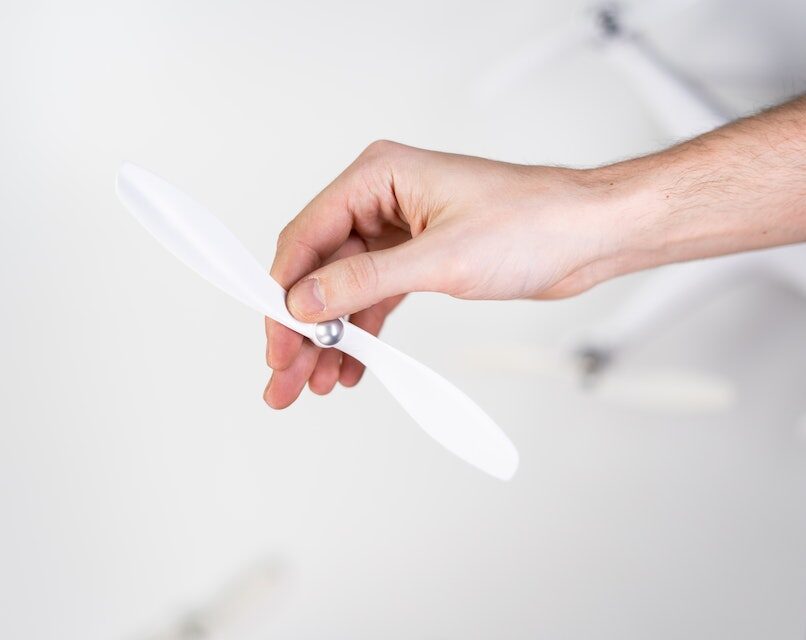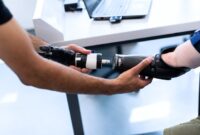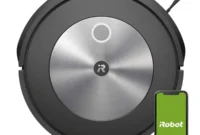Drones have become incredibly popular in recent years, serving various purposes from recreational flying to professional aerial photography and videography. These unmanned aerial vehicles rely on numerous components to function optimally, and one crucial part that significantly impacts their performance is the propellers. Choosing the right propellers can unlock a drone’s true potential and elevate its capabilities. In this article, we will explore the different types of drone propellers and provide valuable insights on how to select the ideal ones to enhance your drone’s performance.

Introduction
Drone propellers play a fundamental role in generating thrust, lifting the drone off the ground, and maintaining stability during flight. They consist of rotating blades that create airflow and exert force, enabling the drone to move in different directions. By understanding the importance of propellers and considering various factors, you can select the optimal ones for your drone, maximizing its performance and achieving the desired flight characteristics.
Understanding the Importance of Drone Propellers
Drone propellers are not merely spinning blades; they are integral to the overall flight experience and can significantly impact a drone’s performance. The right propellers can enhance speed, agility, stability, and control, while the wrong ones can lead to subpar flight characteristics and potential crashes. To unlock your drone’s full potential, it’s crucial to select propellers that are compatible with your drone’s specifications and flight objectives.
Types of Drone Propellers
- Fixed-Pitch Propellers: Fixed-pitch propellers have a fixed angle of attack and are commonly found on beginner-level drones. They offer simplicity and stability but are limited in terms of performance adjustments.
- Variable-Pitch Propellers: Variable-pitch propellers allow for adjustable blade angles during flight, enabling greater control and responsiveness. They are often used in high-performance drones that require precise maneuverability.
- Two-Blade Propellers: Two-blade propellers strike a balance between efficiency and responsiveness. They are suitable for a wide range of drones and are commonly used in both recreational and professional applications.
- Three-Blade Propellers: Three-blade propellers provide improved stability and control compared to two-blade counterparts. They generate more lift and are beneficial for drones that require enhanced maneuverability.
- Four-Blade Propellers: Four-blade propellers offer increased thrust and stability, making them ideal for heavy-lift drones and applications that require precise hovering capabilities.
Factors to Consider When Choosing Drone Propellers
- Drone Size and Weight: Different drones have varying sizes and weights, and propellers must match these specifications to ensure optimal performance and load distribution.
- Flight Purpose and Environment: Consider the intended use of your drone and the environment in which it will operate. Propellers suited for aerial photography might differ from those used for racing or industrial inspections.
- Motor and ESC Compatibility: Ensure that the propellers are compatible with your drone’s motors and electronic speed controllers (ESCs) to prevent overheating or damage.
- Material and Construction: Propellers can be made from various materials such as plastic, carbon fiber, or composite materials. Each material has its advantages and considerations regarding durability, weight, and cost.
- Thrust and Efficiency: Propellers generate thrust, which affects the drone’s ability to ascend, descend, and maneuver. Consider the desired thrust output and the propellers’ efficiency to achieve optimal performance.
Optimizing Performance with the Right Propellers
- Increasing Speed and Agility: If speed and agility are essential for your drone, opt for propellers that are designed for high-performance applications. Consider factors like blade design, size, and material to maximize your drone’s speed and maneuverability.
- Enhancing Stability and Control: For tasks that require precise control and stability, selecting propellers that offer good balance, low vibration, and improved aerodynamics can greatly enhance your drone’s stability and flight characteristics.
- Maximizing Flight Time: If longer flight durations are crucial, look for propellers that are designed to be efficient in terms of power consumption and thrust generation. Lightweight and aerodynamically optimized propellers can contribute to extended flight times.
Propeller Maintenance and Safety Tips
- Regular Inspection and Cleaning: Inspect your propellers regularly for any signs of damage, wear, or debris accumulation. Clean them gently using appropriate tools to ensure optimal performance.
- Balancing the Propellers: Balanced propellers minimize vibrations, which can affect your drone’s stability and image quality. Invest in a propeller balancing tool and ensure that each propeller is properly balanced before flight.
- Handling and Storage Precautions: Handle propellers with care, avoiding bending or flexing them excessively. Store them in a safe and secure place away from moisture and extreme temperatures.
- Safety Guidelines: Follow local regulations and safety guidelines when operating your drone. Always maintain a safe distance from people, property, and restricted airspace. Be aware of the potential hazards associated with propellers and take necessary precautions.
Conclusion
Choosing the right propellers for your drone is crucial for unlocking its performance potential. By understanding the different types of propellers available, considering relevant factors such as drone size, flight purpose, and environment, and optimizing performance based on specific requirements, you can elevate your drone’s capabilities and achieve the desired flight characteristics. Additionally, proper propeller maintenance and adherence to safety guidelines are essential for safe and enjoyable drone flying experiences.
FAQs
- How often should I inspect my drone propellers? It is recommended to inspect your drone propellers before each flight. Regular inspections help identify any damage, wear, or debris that could affect performance.
- Can I mix different types of propellers on my drone? Mixing propellers of different types is generally not recommended. It can lead to imbalanced performance and potential flight instability. Stick to using matching propellers for optimal results.
- Are carbon fiber propellers better than plastic ones? Carbon fiber propellers are generally more rigid, lightweight, and durable compared to plastic ones. However, the choice depends on your drone’s specifications, flight requirements, and budget.
- What happens if I use the wrong size propellers on my drone? Using the wrong size propellers can lead to imbalanced thrust, inefficient flight, and potential damage to your drone’s motors and electronic components. Always ensure propellers are the correct size for your drone.
- Can I reuse damaged propellers? It is generally not recommended to reuse damaged propellers. Even minor damage can affect flight stability and performance. Replace damaged propellers to ensure safe and optimal drone operations.


